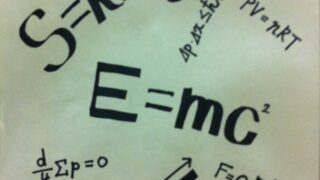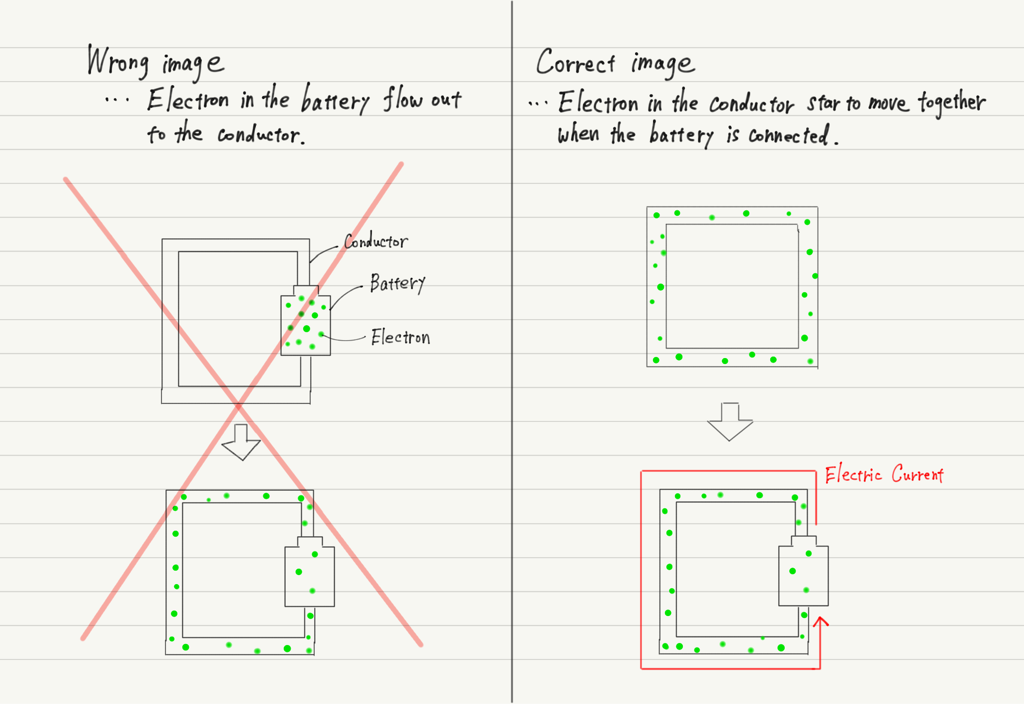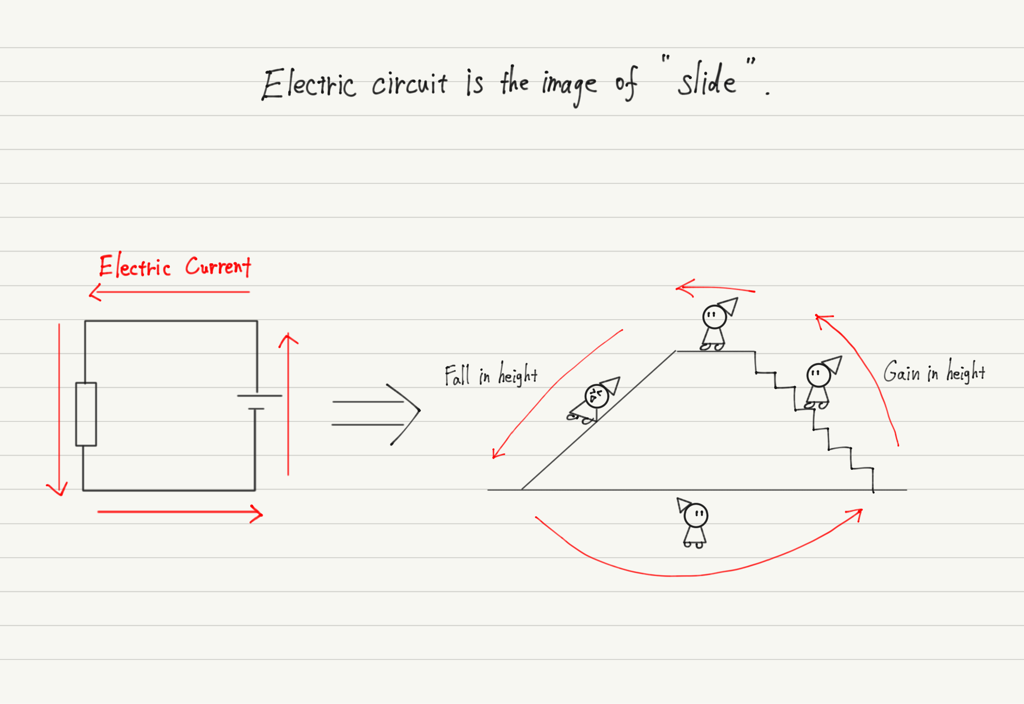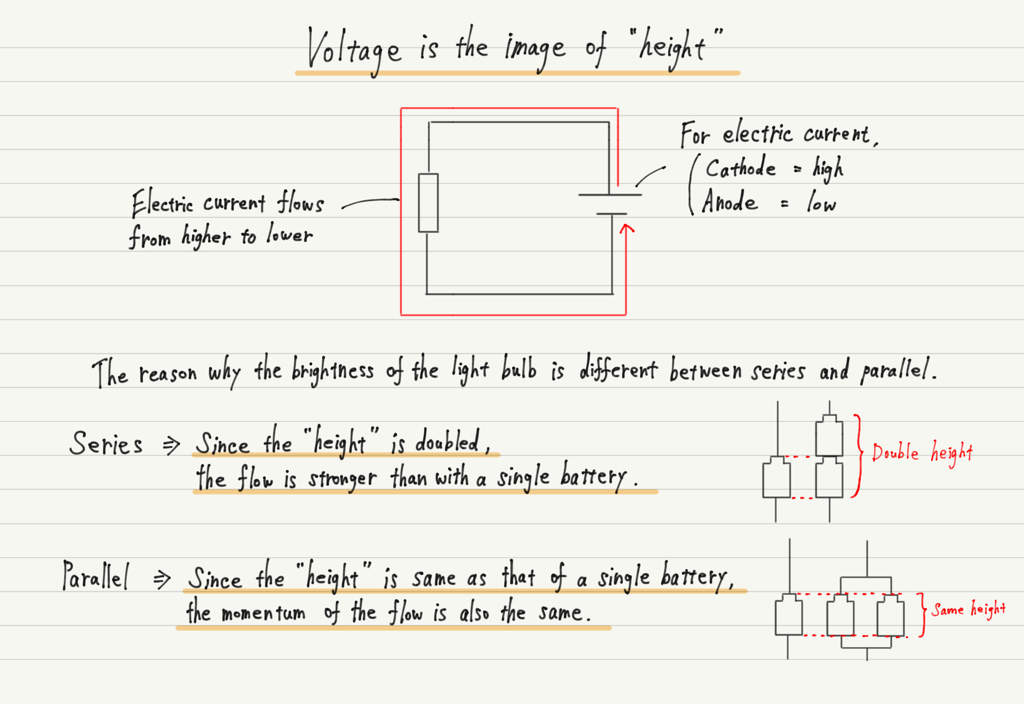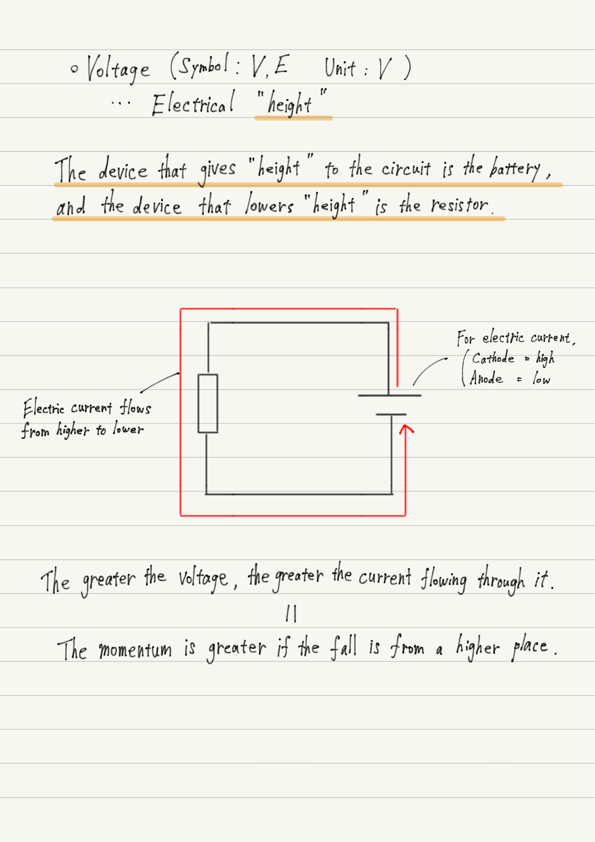Voltage
Now that we have finished two of the three physical quantities in Ohm’s law (Resistance and Electric Current), let’s learn the last one, voltage. Note that not having a correct picture of voltage will hinder you when solving circuit problems.
Voltage Mistakes #1
“The electricity in the battery flows and becomes electric current. Eventually, when the battery is empty, no current flows.”
This is a typical mistake. There is no electricity in the battery to begin with!
So where does the flowing current come from? Recall what you have learned so far.
The current flowing through the conductor is really free electrons, and free electrons are abundant in the conductor.
It is not that electricity is flowing out of the battery, but only that the free electrons in the conductor have started to move.
Voltage Mistakes #2
“The current flows because the force of the battery pushes the free electrons in the conductor.”
At first glance it looks fine, but is the image of “pushing out” correct?
Recall the series and parallel connection of batteries.
When two batteries are connected in series to a light bulb, the bulb shines brighter than when only one battery is connected. On the other hand, when two batteries are connected in parallel to a light bulb, the brightness of the light bulb is the same as when only one battery is connected.
If the battery is “pushing out” free electrons due to voltage, then the two batteries are pushing with the same force in both series and parallel, so the light bulb should be as bright in parallel as in series. however, this is not the case.
In other words, the image of “pushing out” is not correct.
The correct image of voltage is “height”, not pushing force. A battery is a device that gives height to a circuit.
Imagine that the cathode side of the battery is higher than the anode side. The current flows from the positive to the negative electrode of the battery, which means that the current is just “falling” from the higher to the lower electrode, just like the flow of water.
The height is raised by the battery and lowered through a resistor. The repetition of this rising and falling is an electric circuit. It is easy to understand if you imagine it as a child playing on a slide.
Once you have this image, you should be able to easily understand the difference in brightness between the series and parallel connections of the light bulbs.
Summary of this lecture
Next Time
The next lecture will finally deal with Ohm’s law.
